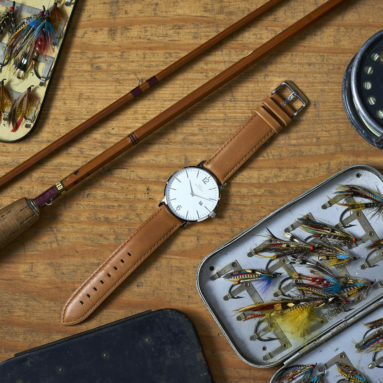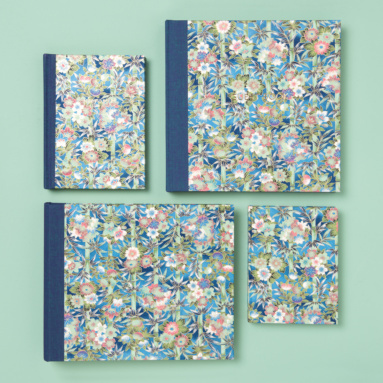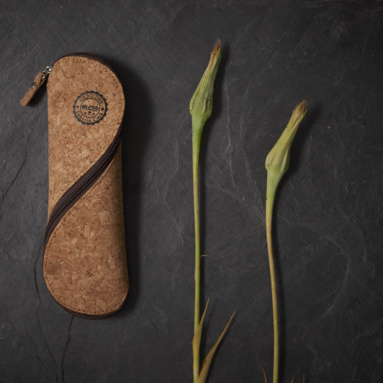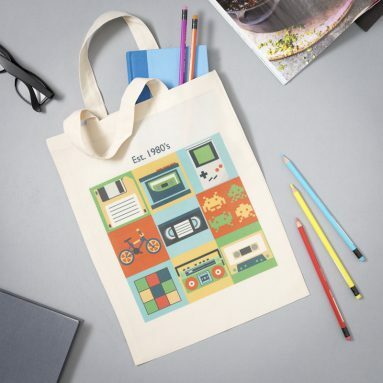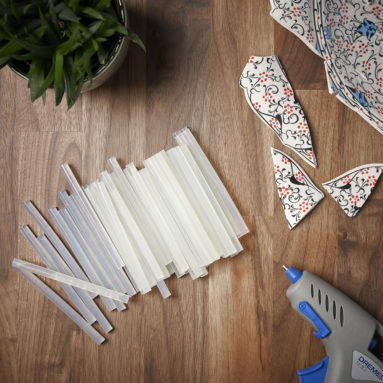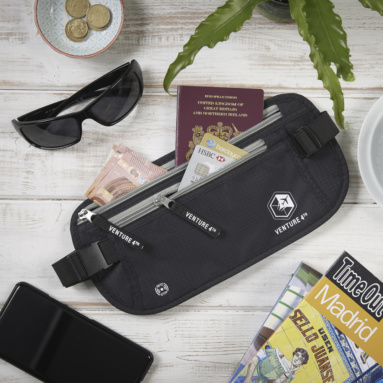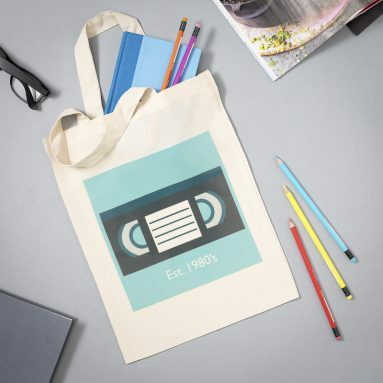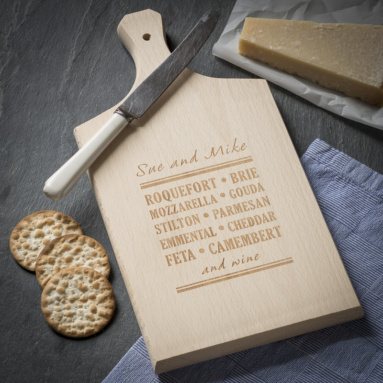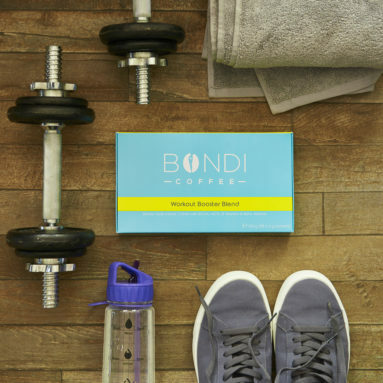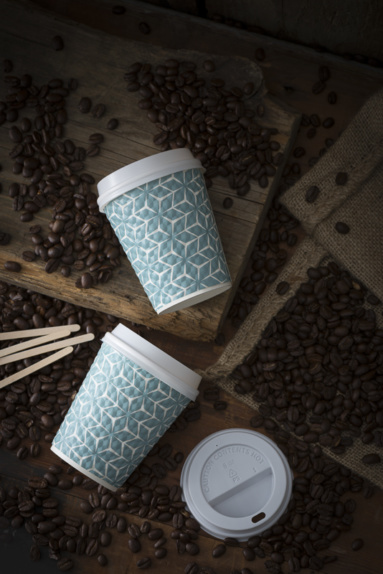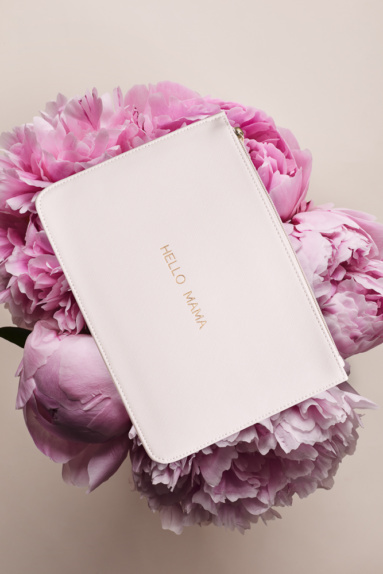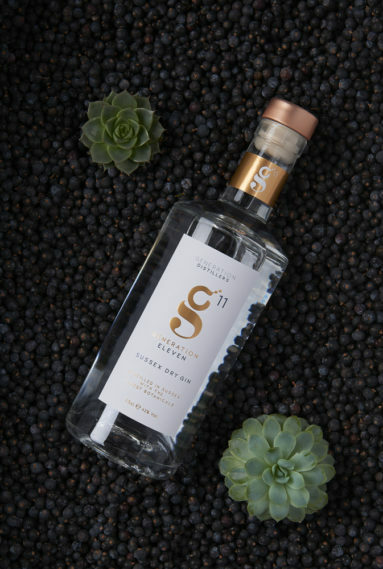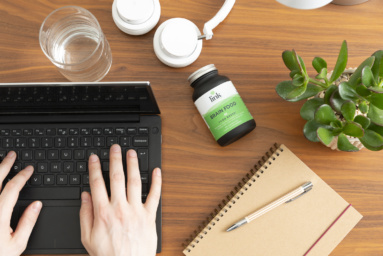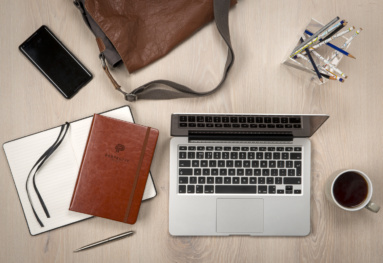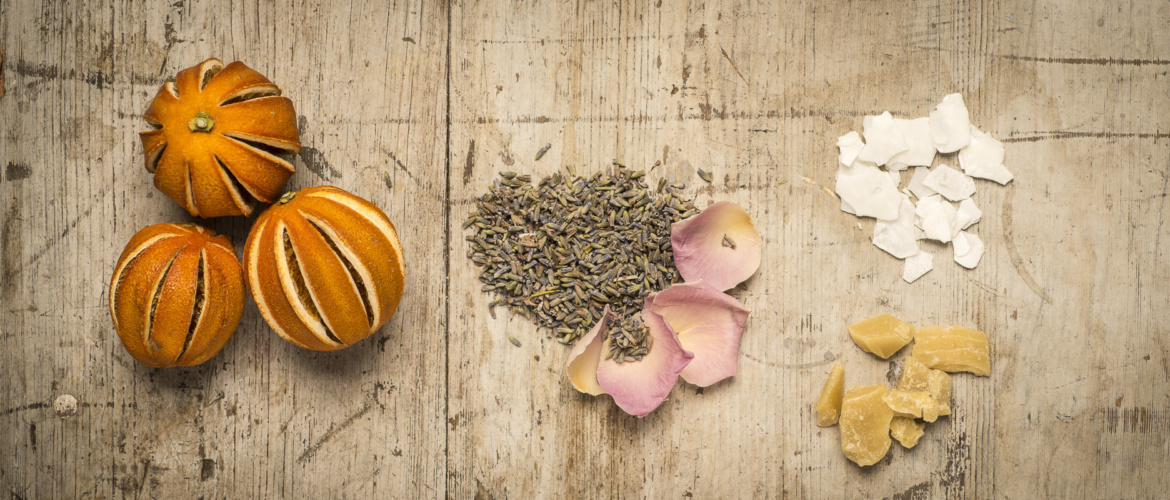
The Ultimate Flat Lay Photography Guide for Instagram and Beyond
Want to elevate your product shots beyond the merely pedestrian? Our in-depth flat lay photography guide will soon have you shooting flay lays like the pros.
What is a Flat Lay?
Clean, neutral, and informative product photography will likely be a core element of any successful marketing drive. However, professional Amazon-style product shots focus entirely on the product, and nothing but the product. While this helps to give prospective customers a clear idea of the benefits and advantages offered by a particular item, functional photos showing only the product isolated on a white background won’t do much to help establish brand image.
Indeed, when done properly, neutral product shots effectively render your brand invisible. And as any successful e-commerce marketeer knows, a strong and aspirational brand image is every bit as important as the product itself – if not actually more so.
This is where flat lay photography comes in. In the simplest of terms, flat lays are photos of items laid out on a flat surface and photographed directly from above. However, a good flat lay photo does a whole lot more than this.
In practice flat lay photographs offer a fantastic opportunity to tell a story about both your brand and the product itself. This will create a connection with the viewer on a more emotional level than can be achieved by simply showing cold, dry visual information about the item in the form of an Amazon-style product photo.
While massively popular on Instagram, flat lays also work really well as supporting product shots, as blog images, for newsletter blasts, and as hero shots on your website’s homepage, product pages and landing pages. And in some cases, a flat lay might even replace the neutral product shot altogether.
Why Flat Lay?
Most of us make our purchases based in part on various practical considerations such as the specific features an item offers, perceived quality of build, ease of use, attractiveness of design, and price etc. However, there are also many more subtle and unconscious influences at play on our buying decisions. Indeed, we’ll often find one product or brand more attractive than another because we associate it with a particular kind of lifestyle or set of values.
Although a well-executed flat lay photo absolutely should show off the product in the best light, it will also help to create more of an aspirational mood or atmosphere around the product. This is often the very factor that will persuade an undecided customer to go with your product over a similar one offered by a competitor.
Flat lays can include several cross-selling products together with a hero product, making them highly cost effective. Additionally they can be used in a variety of situations depending on your needs (i.e. homepage, social media, blog etc.). This flexibility means that a flat lay shoot offers excellent value for money when compared to commissioning other less versatile types of product photography which may only be usable in a very limited context.
What makes for a good Flat Lay photo?
Within the simple definition of “items laid out on a flat surface and photographed directly from above” there’s actually an enormous amount of variation in flat lay photography.
Some shots are highly stylized and graphic; the fact that such photos have been very carefully constructed under controlled conditions in a studio will likely be apparent to any viewer. Other flat lays appear to be much more casual affairs, like someone emptied the contents of their bag onto a table and took a few random snaps.
This latter kind of flat lay photo can easily give the impression that it was shot with little effort (although, if it’s any good, then presumably by someone with an impressive degree of talent). Yet the reality is that if a flat lay photo has been done well, then it’s likely that a considerable amount of thought and hard work went into producing it – even if the end result looks like it was merely a happy accident.
Indeed, shooting a stylish and technically well-executed photograph that nonetheless retains a casual and uncontrived feel is a real skill. However you can be pretty certain that there is very little that is genuinely casual and uncontrived about the way in which such images are produced.
In short, a lot of consideration goes into making good flat lay photos – even those that look they were just churned out in a few seconds.
How to shoot stunning Flat Lays
Let’s take a look at the main elements you should consider when shooting flat lays.
What’s the story?
Concept and Direction
Good flat lays function like visual micro-narratives: suggesting ambiguous yet potent little stories a potential customer can embellish with their own imagination. Look at some of your favourite examples of flat lay photography and consider all the different scenarios each shot suggests. You can look upon the items in a flat lay photo like the clues in a whodunit crime scene: was it Colonel Mustard, with the candlestick, in the conservatory?
By showing your product in an appropriate setting, and alongside relevant props, you can suggest an aspirational scenario that will strike a chord with the viewer’s imagination. Precisely what this implied scenario should be will depend on a variety of factors, including the product itself, your brand image, target market, and any other important marketing considerations.
For example, if the product were a luxury leather smartphone case and cardholder, by varying the background and props we could choose to suggest a number of different scenarios: from a raucous night out with friends, to a romantic dinner for two, or even a high-flying exec on the move, etc. Choosing a narrative – or, if you’d prefer not to be quite so didactic, then just simply selecting a general mood or theme – will help you to decide what elements to include or exclude from each shot.
Not only this, but a theme will also help you to settle on a simple and restricted colour scheme. As the goal is to create a unified and harmonious image, a limited colour palette is essential when shooting flat lays. Most likely you’ll want to settle on 2 or 3 dominant colours, however you could conceivably limit your flat lay to just one: indeed, your theme might be a concept as simple as the colour “blue”. Conversely, a photo containing too many colours would likely appear confusing and visually unappealing (unless, of course, your theme is precisely “the full spectrum of the rainbow”).
A theme could be anything from “travel” to “springtime,” “dusk” to “the beach,” or from “bronze” to “hangover.” It’s entirely up to you. What matters is that it’s a theme that your target market will find inspiring, attractive, or intriguing in some way.
Once you’ve settled on a mood, story, or theme, you can refer back to this at any time in order to dictate the remainder of your creative decisions as you develop the shoot.
Content is king
Background
Once you’ve chosen a theme, selecting a background should be relatively straightforward. For example, if my theme is “forest” then clearly I’m not going to lay my products out on a sheet of steel or some Hello Kitty wallpaper. Instead my options are narrowed down to backdrops such as moss, leaves or tree bark. Or, if I’m going for a simpler and more graphic look, then solid backdrops in natural colours such as green, brown and beige.
Generally, though, you’ll want to select a light-coloured and neutral backdrop on which to shoot your product, so that the background doesn’t compete with the star of the show: the product itself. For this kind of shot you can use a large sheet of paper, card, or posterboard in a light and delicate shade.
However, there will be times when you may want something more adventurous behind the product, such as a pattern or texture or something more suggestive of a specific location. For many such scenarios an unassuming domestic backdrop such as floorboards, a table top, marble, or even brickwork, will likely be the best solution.
Hero vs Supporting Actors vs Props
What are you shooting a flat lay of? Who is the star? Given that one of the advantages of flat lays over other types of product shot is that they are so well adapted to shooting multiple items together, perhaps there’s even more than one star? No matter how many products you will put in a shot, you will likely want to choose just one or two as the main focus of attention, with others serving more supportive roles.
Once you’ve filled your main roles, now it’s time to cast some extras in the form of props. While you may often need to source specific props for a particular shoot, in the long term you should try to build up a useful library of props you can call upon for most scenarios. Examples of props you might consider stockpiling are flowers, vases, bowls, spoons, sunglasses, adding anything else you think is relevant to the specific theme of the current shot.
Carefully consider what each prop you select is contributing to the narrative: if it risks sending a different message to the one you decided upon for your original working theme, then it shouldn’t be in there. Likewise, if a prop detracts from the setup aesthetically then it needs to be replaced, no matter how suggestive of the narrative it might be.
As mentioned above, for most flat lays you will need to decide upon a hierarchy of your products and props before laying them out, so as to prominently feature the most important ones and place supporting props in less central positions. Also, it often helps to vary the size, shape and texture of props so as to create some variety and interest within what otherwise could become an overly stylized and controlled image. Even just a simple contrast between shiny and matte items can add real interest to a photo.
Alternatively though, you might go for a more wallpaper-like flat lay, with multiple similar or identical products laid out like a repeat pattern.
The human touch
Sometimes, despite your best efforts, a flat lay can end up looking too staged, sterile or lifeless. One way to fix this is by calling on an extra pair of hands (or other body parts). By adding a human element to the shot – for example, in the form of a hand gripping a pen, or holding a coffee mug – you can often bring a struggling scenario to life. A hand model can also be a great way of demonstrating to customers how a product should be used.
Let there be light
Here comes the sun
Free to use, versatile, and invariably beautiful, nothing beats natural sunlight. Be aware though that direct sunshine doesn’t always offer the best solution for flat lays. Better to go for the soft and diffused quality of light cast by the sun bouncing onto your subject indirectly (although note that “indirectly” would also include the sun’s rays scattered by heavy cloud).
Many of the world’s most famous paintings were made using indirect daylight reflecting into a studio through a north-facing window. And what’s good enough for the old masters in the Rijksmuseum is surely good enough for Instagram. Also, by harnessing natural diffused light, you avoid creating heavy and distracting shadows across your products which might risk obscuring important details. What’s more, bounced light also tends to look very clean and minimal: ideal for achieving a sophisticated and elegant looking flat lay.
Walk through your house looking for well-lit areas near windows, but where the sun’s rays don’t enter directly. See how the quality of light changes as you move objects around. Find a spot you like, and go with it. Just be sure to work fast enough that the sun doesn’t shift position and ruin your lovely soft-light setup before you are done.
Take care to switch off any electrical lights in the vicinity of the shooting area, as even if your eyes don’t detect noticeable spillage from these light sources, electrical light will cause your photos to have unwanted colour casts that will be a chore to fix in post production.
Also be very careful not to cast any shadows onto the subject when you shoot. You may have found the perfect spot for Vermeer-like lighting, but if you’ve set up the shot in such a way as to then need to place yourself between the light source and the subject when you take the picture, the first thing you’ll see as you look through the viewfinder will be the shadow of someone holding a camera. I.e you.
Done in a flash
For a bold, punchy flat lay that will truly pop out on Instagram, nothing beats a brightly coloured backdrop and the graphic spank of hard studio flash. Stick a bare strobe head on a lightstand and place it slightly off centre of the image, so that it casts short, dark and defined shadows onto the background. This really helps to bring out your product in relief against the solid block of colour beneath it.
Form and Function
Rise above it all
For a true flat lay you really need to position the camera directly and squarely above the subject on a tripod for a bird’s-eye-view – making sure that the lens-plane is exactly parallel to the background. If you’ll be shooting a lot of flat lays, you might want to invest in a horizontal tripod arm for easier positioning of the camera directly above the subject.
Precision positioning will be especially important if your setup is highly graphic and geometric looking, as any slight deviation from a fully square-on point of view will be immediately apparent from the unwanted converging parallel lines: not a good look.
There are some exceptions to this, however, such as when you want to give the image a sense of scale or perspective. This can work very well with identical or similar products laid out in a regular and grid-like formation. Here the obtuse positioning of the camera will add to the feeling of depth as the repeated items recede into the distance.
An imperfect, skewed camera position might also make for a better shot if you’re going for a more haphazard and casual-looking flat lay with the products apparently just laid out without much thought (again though, we stress the word “apparently” here). For this kind of photo you might be better off just shooting handheld for a more loose and natural feel. Standing on a chair or stepladder will allow you to get a good vantage point over the subject as you shoot.
Calm and composed
As flat lays are essentially just overhead shots of a bunch of inanimate objects lying flat on the floor or a table top – and without much scope for creating depth – clearly there’s a lot riding on achieving a strong and eye-catching composition. However, unlike many other types of photography, when it comes to shooting flat lays, composition is something to think about even before you pick up the camera. Indeed, you should carefully consider the composition of all the different elements in the shot as you lay them out on the background, in much the same way that a painter or graphic designer would compose a picture.
In practice, achieving a pleasing composition will likely involve a considerable degree of back and forth negotiation between subject and camera position. For example, you might put together a rough setup of products and props according to a preconceived idea of how you think the final shot should look. But you should then be open to shifting the position of items and moving the camera itself until you find the best position as you check the setup through the viewfinder.
As far as laying out objects goes, you can approach this in a variety of ways, from super clean and minimal setups containing just a few simple items, through repeated patterns and symmetry, to a more casual and cluttered yet stylish approach. Again, if in doubt, refer back to your theme for guidance.
Space is the place
With graphic compositions of this kind it’s just as important to think about where not to put objects as where to put them. A maximal look is totally valid if that’s what you want to achieve, but don’t cram products and props into the frame just for the hell of it. Carefully consider the space between items – both as you lay them out and when composing the image.
Also, if you plan to overlay text, logos, or other graphic elements onto your photos, now’s the time to consider precisely where these will go. You will certainly not want to obscure the product with graphics, and in any case placing text over a busy background risks rendering it illegible. Again, the solution is to pay careful attention to the negative space in your shot, leaving room in which to place additional design elements at a later point if necessary.
Final Thoughts
Flat lay photos move beyond the standard “objective” representation of merchandise to help tell a more creative and inspiring “story” about your products and brand – allowing viewers to project their own desires onto the product. This kind of emotionally engaging imagery is essential if your products are to connect with customers, setting your brand apart in today’s ultra-competitive marketplace.
We hope you’ve found our flat lay photography guide useful. But if this all sounds like a little too much hard work in the end, here at Photography Firm we specialise in shooting great looking, aspirational flat lays for Instagram, e-commerce stores, blogs and other media. Feel free to get in touch for more information or to request a quote.

